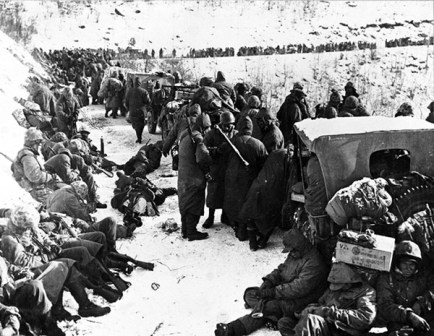
USA vs. The World: Who America Fights and How Often America Fights Those Enemies
U.S. vs. the World: Who America Fights and How Often America Fights Those Enemies
Below is a list of America’s opponents in the major wars against foreign foes. The list of America’s war opponents is in rough chronological order by enemy nation. The U.S. Civil War and the wars against Native American Indian Tribes and Nations are not included in this list.
This list only includes relatively major foes. Smaller conflict foes, who fought against U.S. forces in more limited interventions and retaliations, such as Grenada, Panama, and Samoa. Only when a short, sharp intervention or retaliatory strike, such as Libya in 1981 and 1986, is against a nation that also engaged in a regular or major conflict (The Barbary War and the 2011 Libyan War) with the U.S., are they included on the list.
U.S. vs. the British Empire: Two wars: the American Revolutionary War (1775-1783), and the War of 1812 (1812-1815)
* There were also several non-war incidents in what today would be called a Cold War between the U.S. and the British Empire from the end of the Revolutionary War up to roughly the end of the 1800s, with occasional periods of cooperation, as against pirates and similar common threats.
U.S. vs. France: One war: The Quasi-War (1798-1800)
U.S. vs. Tripoli/Libya: Four conflicts: The First Barbary War (1801-1805), The Gulf of Sidra Incident (1981), U.S. Bombing of Libya (1986), The Libyan War of 2011 (2011)
U.S. vs. Mexico: Three wars: The Mexican-American War (1846-1848), U.S. Occupation of Vera Cruz (1914), U.S. Expedition into Northern Mexico (1916-1917)
U.S. vs. Spain: Two conflicts: U.S. Invasion of Spanish Florida (1818), The Spanish-American War (1898)
U.S. vs. Philippines: Two conflicts: U.S.-Philippine War (1899-1902), Moro Wars (1902-1913)
U.S. vs. China: Four conflicts: Boxer Rebellion (1900), The Cold War (1949-1972), The Korean War (1950-1953), the Vietnam War (1964-1975)*
* China admits they sent over 300,000 troops to North Vietnam to man anti-aircraft guns and assist with logistical matters. China claims nearly 4,000 dead and thousands more wounded due to American air raids on North Vietnam.
U.S. vs. Germany: Two wars*: World War One (1917-1918), World War Two (1941-1945)
*The presence of Hessian and other troops from small German states in the American Revolutionary War is not the same as America’s two wars with Germany. Though the German states of that era sent troops to aid the British were allied to Britain (in return for financial compensation, they were not doing so on behalf of a larger German “nation.” The two World Wars were fought against a united Germany.
U.S. vs. Russia/Soviet Union: Two conflicts: Allied Intervention in the Russian Civil War (1918-1921), The Cold War (1946-1991)
U.S. vs. Korea: Three conflicts: The 1871 U.S.-Korea Conflict (1871), The Korean War (1950-1953), the DMZ War (1966-1969)
U.S. vs. Vietnam: One conflict: The Vietnam War (1964-1975)
U.S. vs. Islamic Militants/Jihadists*: Multiple conflicts/incidents: U.S-Iran Hostage Crisis (1979-1981), Lebanon Intervention and Beirut Bombing (1982-1984), Somalia Intervention (1992-1993), 1998 Embassy Bombings and U.S. Retaliation (bombings at U.S. Embassies in Kenya and Tanzania by al-Qaida, and U.S. missile attacks on Sudanese and Afghan al-Qaida targets), al-Qaida bombing of the USS Cole (2000), 9/11 Attacks on the U.S. (2001), U.S. Invasion of Afghanistan (2001-vs. al-Qaida and Taliban), War in Iraq vs. Shiite Militias, War in Iraq vs. al-Qaida and Sunni Militias**, Intervention in Somalia (2007-Present), Intervention in Yemen (2001-Present), Intervention in Iraq vs. ISIL/The Islamic State (2014) Among others…
*The catch-all phrase used here “Islamic Militants/Jihadists” is used to describe both Shiite militants, such as the Iranian occupiers of the U.S. Embassy in Iran, and Sunni militants such as we see in al-Qaida and ISIS.
**This is a separate category from the U.S. Invasion of Iraq in 2003. That war was to topple Saddam Hussein, who was an enemy in his own country of Islamic Jihadists, as he was a secular dictator, and the Islamic militants were opposed to him. Following Saddam’s fall, various Sunni and Shiite militias developed, and came into conflict with the American occupying forces. Al-Qaida stepped in to this chaotic situation as an opportunity to fight the Americans and their allies while gaining support and power among Sunni populations in Iraq.
U.S. vs. Iraq: Three conflicts: The Gulf War (1990-1991), the No-Fly Zone War (1992-2003), The Iraq War (2003-2011)

